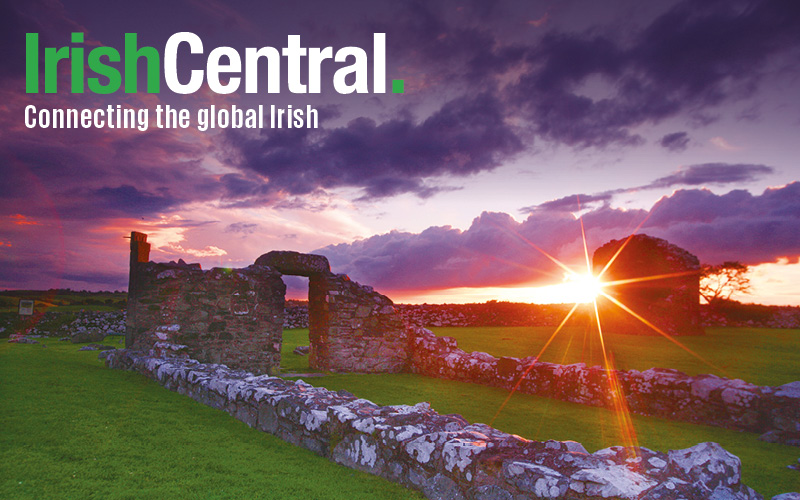For over a century and a half shame and silence were the most common Irish responses to the calamity of the Great Hunger
A million dead, a million fled was the old saying, but concern over igniting further strife in the present (a particular concern during the Troubles) kept a lid on most discussions of it.
But now a new roadshow coming to the USA and Canada plans to give voice to the descendants of famine era Irish immigrants, many for the first time.
Left glaringly unaddressed in many quarters, the wound stayed raw for decades after the disaster – which was the worst episode of mass starvation in 19 century Europe – traumatized all who lived through it.
There are many reasons for the eerie silence that fell across Ireland after the famine. Some, it may be safely deduced, suffered from what psychologists call survivors guilt, and some feared the potentially radicalizing effect its legacy could have on a new generation (this was particularly true during the intense periods of civil conflict).
But now The Great Famine Voices Roadshow wants to clear the air on a subject that for far too long was feared where it was not ignored.
In an exciting new initiative from the both the National Famine Museum in Strokestown Park and The Irish Heritage Trust, a series of free open house events will be held in the USA and Canada where descendants of Irish emigrants and the general public are welcome to come together and share their family memories and stories of coming to America, especially during the period of the Great Hunger, which was 1845 to 1852.
The roadshow is being funded by the Emigrant Support Program of the Irish government.
“In essence it'll be in the tradition of the great African American Oral History Project in The Library of Congress,” explains program executive Turlough McConnell.
“In this case though the stories will be collected by Strokestown and the Irish Heritage Trust and they'll be archived at Strokestown but they'll be online for the public to listen and contribute to.”
It's the start of a major outreach that relates to famine history. Many families in North America will have the stories that have been handed down but never officially compiled recorded. They will be a target audience for the new initiative.
“There are two kinds of famine history that I'm aware of,” McConnell continues. “One are the families who were deeply affected personally, whose great great grand parents had to leave Ireland directly. There were hundreds of thousands of them who started whole communities here in the U.S. Then there are the second kind, the more recent immigrants here who have our own famine stories from Ireland itself. Both can span generations and locations. It's a much wider net than many people realize.”
One question that people ask is why now? Why are we grappling with the legacy of the famine the way we are now?
“Well, when you see these horrendous photographs of refugees migrating across oceans because of famine and violence in their homelands, our own journey is echoed in it. The numbers taking to boats now are colossal and their experiences echo the Irish back in the 1840's.”
And in regard to the Irish themselves, there was a long legacy of shame and silence. There was a refusal to discuss the trauma. Why was this? “It was a very tricky situation until 1997, the 150 anniversary of the darkest year of the famine. It was the first time the Irish government felt empowered and confident enough – because of the Peace Process in Northern Ireland - to even talk about the Great Hunger.”
Prior to that it was a very politically charged conversation, McConnell says. There was a lot of finger pointing at Britain. But around that time the then Prime Minster Tony Blair apologized to the people of Ireland for the way in which the British government had handled the issue back in the 1840's. So that gesture set the stage and a healing began. “The Irish government was then able to take on ownership of its own history and spearhead initiatives like Famine Commemoration Days, that are held internationally every year,” McConnell continues.
McConnell says the real stars of this roadshow initiative are Caroilin Callery, a Director of the National Famine Museum in Strokestown Park (the Callery family own the estate) and Dr. Jason King of the Irish Heritage Trust.
“Strokestown to me is the Versailles of Ireland. First it was an estate where the starving tenant farmers were thrown off the property, then it was the site of the assassination of the landlord Major Dennis Mahon, it's a powerful story. The entire history of the Anglo Irish conflict, from the conflict between big house to the tenant farmers, bound up in one location.”
The Strokestown estate, the symbol of the oppression that had blighted the lives of their ancestors, was bought out twenty years ago by local investors and the house was eventually restored to stand as a museum, because otherwise it's papers, its buildings and its story would have been lost to time.
Interest in telling the stories of the famine nationwide is off the charts, McConnell says. “I'm getting emails from Chicago and San Fransisco and elsewhere asking can the roadshow come there? The good news is that with the internet you can go online and participate. But people still want the experience of coming to the roadshow to hear and share their stories.”
A question for the roadshow is how do they balance justified criticism of the British policies of the period with the political demands of our own time? Isn't the element of provocation hard to defuse?
“Remember that for many this is the first time they have ever found a forum for talking about this. For some it's a surprise to hear how extensive the disaster was, that it reached Belfast and Derry and elsewhere. For others it's simply the act of telling their family stories often for the the first time.”
“We are excited about meeting people during the Great Famine Voices Roadshow and hearing their family stories about how their ancestors came from Ireland to start new lives in the United States,” Christine Kinealy, Director of Ireland’s Great Hunger Institute at Quinnipiac University told the Irish Voice.
“The Roadshow will provide a unique opportunity for Irish-Americans and Irish-Canadians to share their stories, strengthen their sense of ancestry, and historical and current Irish connections. All are welcome to these events”, added Caroilin Callery, a Director of the National Famine Museum in Strokestown Park, Ireland.
“Over the past few years, we have been in search of stories from ‘the next Parish’ in the US, where so many of those who survived the Great Hunger made new lives. We need to hear these stories.”
A selection of these family memories and stories will be made freely available on the Great Famine Voices online archive www.greatfaminevoices.ie. The roadshow will visit New York, Boston, Philadelphia, New Haven, Toronto and Montreal, see the website for times and dates.




Comments